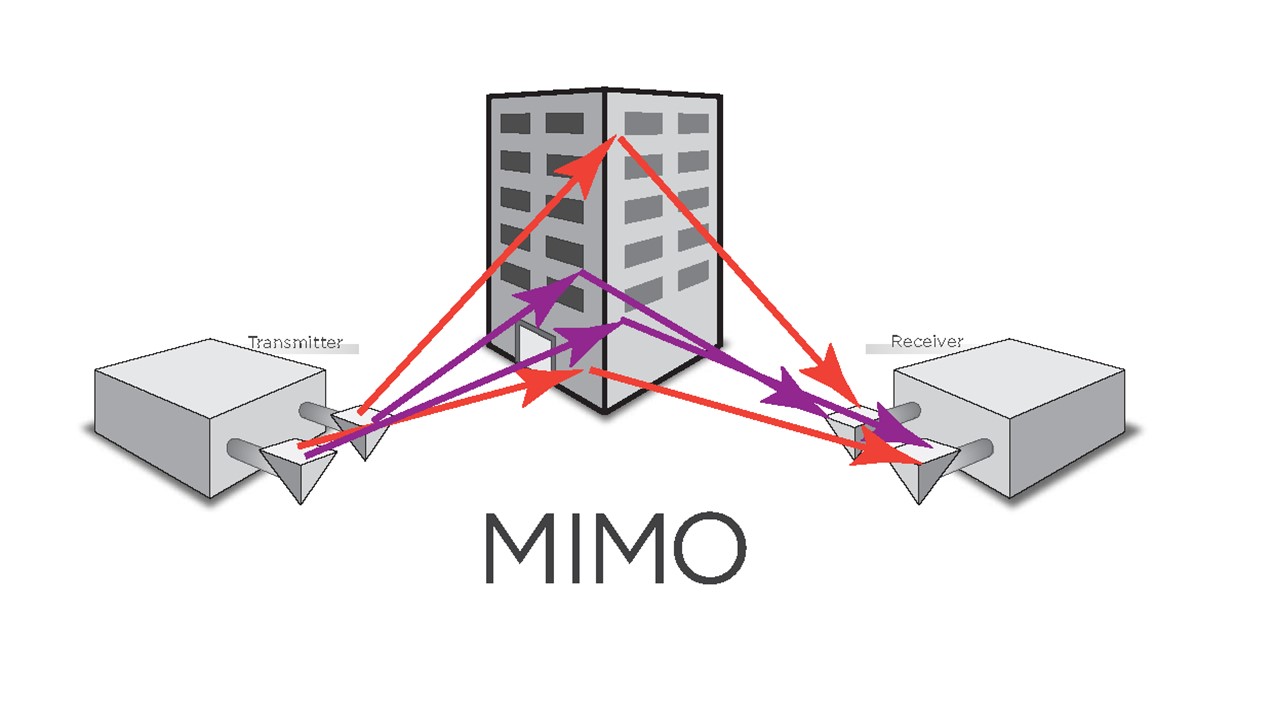In This Article
What is MIMO Technology?
The MIMO or Multiple-Input Multiple-Output is basically an advanced antenna technology. It is mainly used in wireless connectivity, to establish a wireless connection, using this technology, multiple antennas are used from both the ends.
KEY TAKEAWAYS
- The MIMO technology uses advanced wireless technology to transfer a larger amount of data by using several receiving antennas and transmitting devices.
- It offers the 802.11n connectivity more speed and power and guarantees a more reliable output.
- The natural radio-wave phenomenon of it bounces the transmitted data off different objects to reach the receiving antenna several times from several angles.
- The spatial dimension offers higher signal strength, reduces risk and enhances the quality of data transmitted.
Understanding MIMO Technology

The abbreviation, MIMO stands for Multiple-Input Multiple-Output. To transfer more data at the same time, this advanced wireless technology uses multiple transmitting devices and receiving antennas.
Any smart device that is compatible with the 802.11n connectivity can support MIMO.
By using this technology, the 802.11n connectivity gains more power and can reach higher transferring speed.
To use this technology, both the transmitter and the receiver must have to be compatible with it.
In the MIMO system, information is transmitted through multiple antennas in the same bandwidth.
After bouncing on different objects, each transmitted signal reaches the receiving antenna through different paths and projects on the antenna from different angles.
That results in more reliable output. The rate of transferring data can also be increased by changing the number of signal transmitters and receiving antennas.
The receiver is developed in such a way that it can easily capture all the data travelled through various different paths.
There is a slight difference in the time between each received signal as these signals travel through different individual paths.
How Does It Work?
The MIMO technology uses multipath, which is a natural radio-wave phenomenon.
In it, the transmitted data bounces off different objects, such as walls, ceiling and other furniture, present around the transmitter to reach the antenna of the receiving device.
Thus the signal reaches the antenna plenty of times from different angles at different times.
The major issue that the developers had faced by using multipath was the weak signal issue.
To resolve this issue and to develop the range of the wireless signals, the developers have added spatial dimension to the MIMO.
Apparently, MIMO technology increases the signal capturing capacity of the receivers by combining the data that are received on the antenna, from different paths, at different times.
The smart advanced antennas come with spatial diversity technology. It also boosts up the performance of the other antennas.
The receiver can increase its range by simply adding receiver diversity.
To get higher speeds, the users have to simply increase the numbers of the antennas.
A wireless adaptor that has three antennas can offer a speed of 600 Mbps.
If the adapter has got only two antennas then it can offer a speed of 300 Mbps.
To use the new MIMO technology, the router must have multiple antennas and have to be compatible with all the features of 802.11n.
Thus it can attend the highest possible speed. Older routers use SISO technology. In this backdated technology, one spatial stream can be sent or received at a time.
Advantages of MIMO
The major advantages that a user can find in the MIMO technology are mentioned below:
- Better signal strength
By using this advanced MIMO technology, the users can enjoy a better signal strength.
Even when the receiver doesn’t get a clear line-of-site, it uses the bounced and reflected RF transmissions to strengthen the connectivity.
- Better quality
As the MIMO receiver gets plenty of signals and each signal carries the same data, the receiver can provide a content of almost the same quality as the base system.
Especially while transmitting video, better quality and quantity is assured.
- Less risk factor
As the MIMO receiver receives data through various transmitted signals, there are little chances of data loss.
On the other hand, the previous SISO technology had a high risk factor having only one transmitted signal and that technology was too slow than the MIMO technology.
Conclusion
In the universe of technology, development and changes are very constant.
Hope we can experience more advanced features in the near future.
But, now this MIMO is the smartest and the fastest wireless antenna technology.